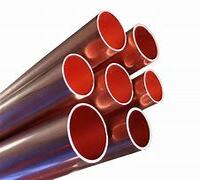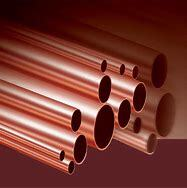1. Introduction
In the past 48 hours, global copper prices surged past $9,000 per metric ton due to supply chain disruptions in Chile and rising demand from renewable energy projects—highlighting copper’s critical role across industries. This spike has renewed interest in copper products like rods, strips, and pipes, especially among contractors, electricians, and scrap recyclers looking to optimize cost and performance.

Whether you’re installing an earthing system, welding copper components, or stripping wire for scrap, understanding the differences between copper rod types—and how they compare to copper strips and bars—is essential. Let’s break it all down.
2. Copper Rod Variants: Solid vs. Bonded vs. Clad
Not all copper rods are created equal. The term ‘copper rod’ broadly includes solid electrolytic-tough-pitch (ETP) copper, copper bonded earthing rods, and copper clad steel ground rods.
Solid copper rods—often called rod copper or copper round bar—are pure (>99.9% Cu) and ideal for high-conductivity applications like busbars or copper to copper welding rod uses. They’re corrosion-resistant but expensive.
- Copper bonded earthing rod: Made by molecularly bonding a thick layer of copper onto a steel core, offering strength and conductivity at lower cost.
- Copper clad ground rod: Features a thinner electroplated copper layer over steel—more affordable but less durable in corrosive soils.
For grounding, professionals often choose between earthing rod copper (solid) and copper bonded steel based on soil conditions and budget. The earthing rod price for solid copper can be 2–3x higher than copper bonded alternatives.
3. Welding and Brazing: Choosing the Right Copper Rod
When joining copper components, the choice between copper brazing rod and copper welding rod matters greatly.
Copper to copper brazing rods typically contain phosphorus or silver alloys, allowing strong joints without melting the base metal. These are preferred for plumbing and HVAC work.

True copper welding rod is rare—most ‘copper rod for welding’ is actually a filler alloy like ERCuSi-A (silicon bronze), used in MIG/TIG processes. Pure copper welding requires preheating and is mostly limited to specialized industrial repairs.
Key tip: For DIY projects, copper to copper welding rod isn’t usually necessary—brazing with copper brazing rod delivers reliable, leak-proof joints with far less equipment.
4. Copper Strips: From Earthing to Scrap Recycling
While rods serve structural and conductive roles, flat copper strip variants dominate in grounding grids, busbars, and electronics.
Common types include flat copper strip, beryllium copper strip (for springs and connectors), and nickel plated copper strip (for corrosion resistance). Sizes like 1mm copper strip or copper earth strip 25x3mm are standard in electrical installations.
Recyclers often search for ‘best way to strip copper wire’ or ‘fast way to strip copper cable’ to recover copper strip wire from insulation. Burning copper wire for scrap is illegal in many areas and damages purity—mechanical strippers or rotary cutters are safer and more profitable.
Pro tip: If you’re sourcing materials, search ‘copper strip near me’ or ‘roll of copper strip’ for local suppliers. Prices vary widely—copper strip price depends on thickness, alloy, and market rates tied to 1oz copper price fluctuations.
5. Copper in Piping: Beyond the Rod

Though not rods, copper pipe tube systems are closely related in material science and application. Aircon copper pipe (used in AC units) relies on seamless copper tubing like 15mm copper pipe or 22mm copper tube.
Professionals compare L-type (thicker wall) vs. M-type (standard residential) when selecting air conditioner copper pipe price vs. durability. Soldering these lines requires clean surfaces and proper flux—resoldering copper pipe without removal is possible with careful heat control.
Note: While PEX plumbing pipes are gaining popularity, copper remains the gold standard for reliability in hot water and refrigerant lines.
6. Market Insights and Practical Advice
With copper ingot price volatility affecting everything from copper bar top costs to copper tubing fittings, smart buyers track trends before purchasing bulk items like copper bars for sale or flexible copper bus bar stock.
For grounding projects, copper clad steel earth rod offers a middle ground—better longevity than galvanized steel, lower cost than solid copper. Always verify specs: ‘copper bonded’ ≠ ‘copper clad.’
Scrap handlers should avoid burning copper wire for scrap—it reduces resale value and violates environmental codes. Instead, use automated tools for stripping wire for recycling efficiently.
7. Conclusion
From solid copper rod to copper clad ground rod, and from thin copper strips to heavy copper round bar, the right choice depends on your application’s electrical, mechanical, and budgetary needs. As copper prices fluctuate, understanding these nuances helps you save money, ensure safety, and maximize performance—whether you’re building, repairing, or recycling.
Our Website founded on October 17, 2012, is a high-tech enterprise committed to the research and development, production, processing, sales and technical services of ceramic relative materials such as Copper. Our products includes but not limited to Boron Carbide Ceramic Products, Boron Nitride Ceramic Products, Silicon Carbide Ceramic Products, Silicon Nitride Ceramic Products, Zirconium Dioxide Ceramic Products, etc. If you are interested, please feel free to contact us.

